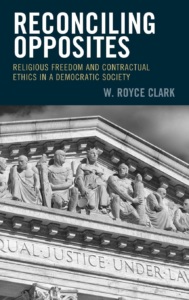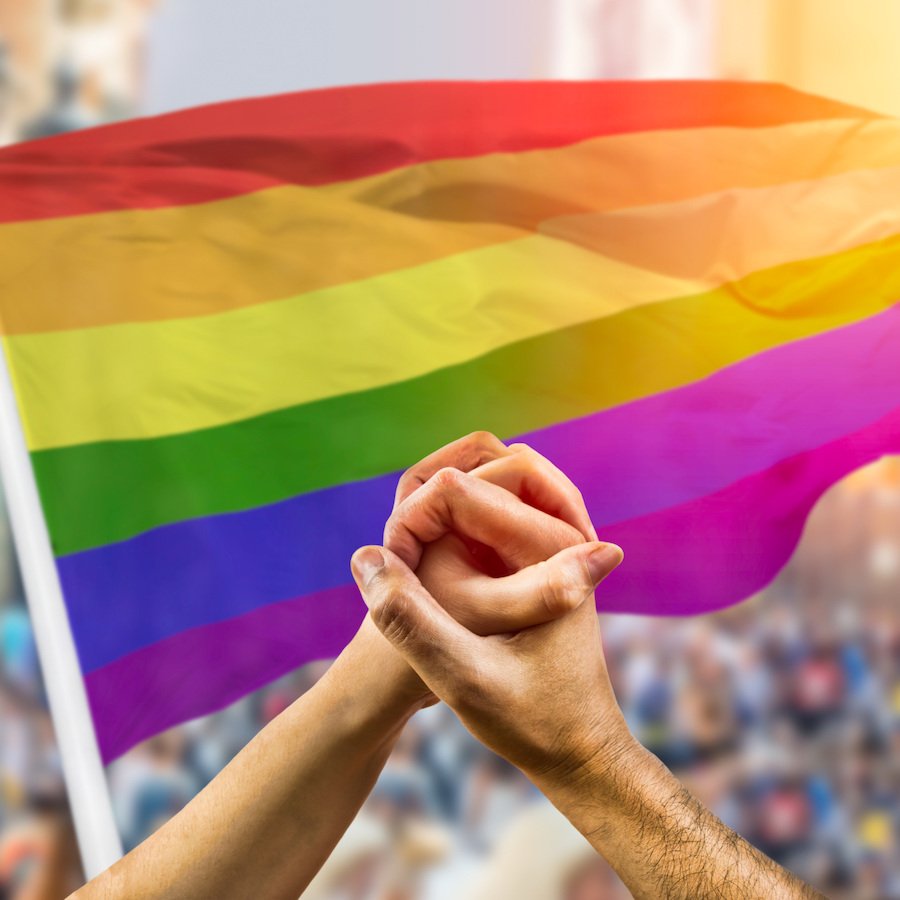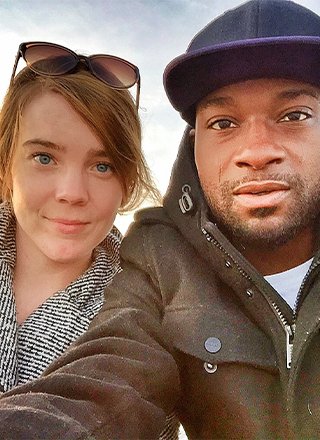Reconciling Opposites: Religious Freedom and Contractual Ethics in a Democratic Society by W. Royce Clark, Fortress Academic, 582 pp.
 The United States is home to believers of nearly every faith, bringing with them their values, dictates and traditions. Often, these religious commitments reinforce the civil laws structuring our society. But what happens in a democracy when an individual’s religious ethic conflicts with a collectively established secular mandate?
The United States is home to believers of nearly every faith, bringing with them their values, dictates and traditions. Often, these religious commitments reinforce the civil laws structuring our society. But what happens in a democracy when an individual’s religious ethic conflicts with a collectively established secular mandate?
That is the question posed by W. Royce Clark, professor emeritus at Pepperdine University, in Reconciling Opposites: Religious Freedom and Contractual Ethics in a Democratic Society. As he puts it, “[t]his study is asking whether or not, in a democratic society … it is possible for both individuals and institutions to attain a sense of unity as a whole, which nevertheless allows for both extensive individual freedoms or differences such as … religious freedom while providing societal, political[,] structural stability for all.”
His answer: “Of course it is.” While our individual spiritual beliefs may differ dramatically, our nation’s laws represent the collective agreement of citizens based on public reason and debate. We are free to follow the dictates of our own religion, as long as it does not conflict with civil and criminal laws or harm others. But when conflicts arise, the well-being of the collective — as enforced through our laws — must override our personal spiritual principles.
To illustrate this requirement, Clark turns repeatedly to a single metaphor: We should imagine our ethical benchmarks — both religious and secular — as “sets of clothing.” I don’t wear pajamas to the office, a prom dress to the racquetball court or a swimsuit to the theater. Just as I must wear appropriate clothes for a specific occasion, I may be expected to abide by different ethical standards at home, in public and in business.
In Clark’s view, this was the vision of religion and government anticipated by the founders. Because religion is a private matter, “[n]o religious people were to be exempt from civil laws, and no religious laws or religious claims of authority were to be utilized by government.”
But “progressively over the past 40 years, the decisions of the [Supreme] Court have given many the impression that they can demand special exemptions from neutral laws and can demand billions of tax dollars for their religious purposes simply because they are religious.”
As one example of a “special exemption from neutral laws,” Clark thoroughly details Burwell v. Hobby Lobby Stores Inc. (2014). In that case, a craft store and a wood specialty store sought a religious exemption from the Affordable Care Act’s mandate that employment-based group health insurance plans provide coverage for contraception. The Supreme Court sided with the stores, holding that the federal Religious Freedom Restoration Act applied to for-profit companies and allowed them to obtain a religious exemption from the legal requirements for businesses — even if the law didn’t target religion for unfavorable treatment or discriminate against a specific religious belief.
In the Hobby Lobby decision, that meant that an employer could avoid its responsibility to employees as long as it had a religious justification for doing so. In dissent, Justice Ruth Bader Ginsburg described the court’s majority ruling accurately: “In the Court’s view, RFRA demands accommodation of a for-profit corporation’s religious beliefs no matter the impact that accommodation may have on third parties who do not share the corporation owners’ religious faith — in these cases, thousands of women employed by Hobby Lobby and Conestoga or dependents of persons those corporations employ.”
But the logic of the Hobby Lobby ruling is not limited to contraceptives. Instead, the Supreme Court’s willingness to grant exemptions from neutral laws to anyone who might oppose them on religious grounds extends to every antidiscrimination law. Take 303 Creative v. Elenis, which reached the Supreme Court only after Reconciling Opposites went to press. The case was brought by Lori Smith, a website designer who wishes to sell her services to couples who want wedding websites. Under Colorado’s public accommodations law, she would be prohibited from denying service to any customers based on their protected status, including their race, sex, sexual orientation or disability.
Smith challenged that law, arguing in the lower courts that being required to make a wedding website for a same-sex couple would violate her free speech and free exercise rights. If the Supreme Court takes to heart the intent of the framers of our Constitution, it will reject Smith’s challenge and hold that we must all abide by laws enacted in our representative democracy — we don’t get to pick and choose what laws to follow, regardless of our reasons for not liking a law. But even a passing listen to the oral arguments suggests that the high court is likely to side with Smith, allowing discrimination and ignoring the original intent of our Constitution’s drafters.
Or consider the ministerial exception, a court-created doctrine that allows religious employers to opt out of antidiscrimination laws if they can convince a court that the harmed employee had important “ministerial” responsibilities. When the exception applies, employers need not present any religious justification for their unlawful employment actions. Employers have used the doctrine to avoid liability for discriminating against a gay guidance counselor, sexually harassing a music director and terminating an elementary school teacher after she was diagnosed with breast cancer. All the while, law firms and advocacy groups are advising religious employers on how to “squeeze into the cleft” of the ministerial exception to avoid legal liability for discriminating against or otherwise abusing their employees.
And just as the court is greenlighting discrimination by religious institutions, it is also ordering states to grant many of these same institutions public dollars to provide public services. Clark adroitly outlines the court’s rapid change of course in school-funding cases. Not long ago, it strictly enforced a wall of separation between government and religion and read the First Amendment to prohibit states from funding religious education. But as the court’s membership changed, so did its rulings. Just this past summer, in Carson v. Makin, the court held that any state voucher program must provide funding to religious and secular schools alike. That is certain to result in more public tax dollars being spent on religious schools and religious education.
Together, the court’s holdings mean that states are losing the ability to regulate religious entities’ actions or prohibit discrimination even when the entities are getting paid by the state to do the work of government.
As Clark puts it, “[t]hrough its generous and novel way of recently approving tax dollars as ‘neutral aid’ for religious education, and extending ‘free exercise’ to include anyone’s discriminat[ory] business practice because of their alleged religious convictions, the Court has not simply opened Pandora’s box but actually split the box wide open.”
As Clark amply demonstrates, none of this is what our founders envisioned, and none of it is conducive to a pluralistic democracy.
Gabi Hybel is a Madison legal fellow at Americans United.


